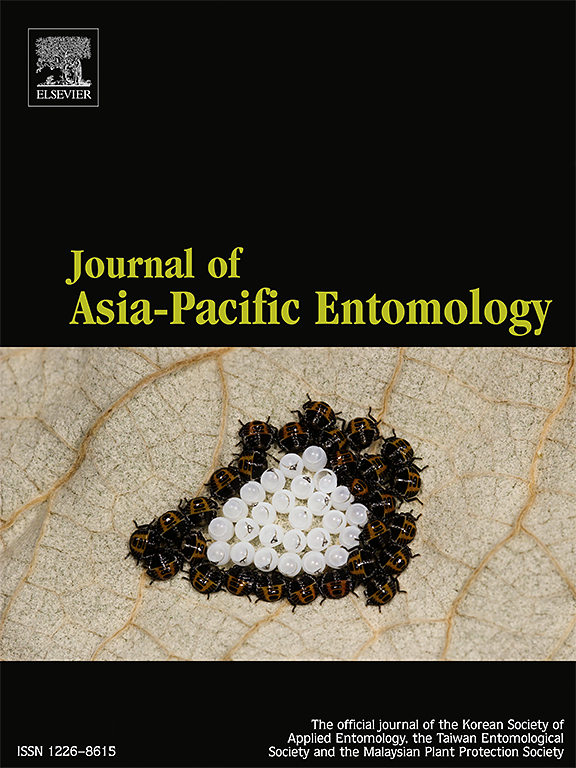Evaluation of the nutritional potential of the edible insect, red palm weevil (Rhynchophorus ferrugineus) from commercial farming facility in Thailand
IF 1.3
3区 农林科学
Q3 ENTOMOLOGY
引用次数: 0
Abstract
Red palm weevil larvae, a common local delicacy in Thailand, were collected from a commercial farm in Phatthalung, located in the southern part of the country, brought to the laboratory, and processed via freeze-drying. Using DNA barcoding, the larvae were identified and confirmed as Rhynchophorus ferrugineus. We assessed the nutritional composition of the larvae following the standard methodologies. The total protein and fat contents were found to be 32.7 g and 55.8 g per 100 g of dried insect, respectively. Altogether, 17 amino acids were estimated including 9 essential ones, amounting to 28.3 g per 100 g dry matter. Among the essential amino acids, leucine was the most abundant, followed by lysine. The amino acid profile was comparable to, and even exceeded, the ideal protein pattern for certain essential amino acids. In regard to fatty acids, monounsaturated fatty acids (52.6 %) were predominant, followed by saturated fatty acids (45.7 %). Palmitic acid and oleic acid were predominating among saturated and monounsaturated fatty acids, respectively. Only n-6 linoleic acid was detected among the polyunsaturated fatty acids. The insect was also found to be a good source of minerals. Notably, the high potassium-to-sodium ratio, along with substantial calcium, zinc, and iron content, may offer significant health benefits for human consumption.

泰国商业养殖设施中食用昆虫红棕榈象甲(Rhynchophorus ferrugineus)的营养潜力评价
红棕榈象鼻虫幼虫是泰国常见的当地美食,从位于该国南部Phatthalung的一个商业农场收集,带到实验室,并通过冷冻干燥进行加工。经DNA条形码鉴定,其幼虫为铁纹蝇。我们按照标准方法评估了幼虫的营养成分。每100 g干虫的总蛋白质和总脂肪含量分别为32.7 g和55.8 g。共鉴定出17种氨基酸,其中必需氨基酸9种,每100 g干物质28.3 g。必需氨基酸中,亮氨酸含量最高,赖氨酸次之。氨基酸谱与某些必需氨基酸的理想蛋白质模式相当,甚至超过。脂肪酸方面,单不饱和脂肪酸占52.6%,其次是饱和脂肪酸(45.7%)。饱和脂肪酸以棕榈酸为主,单不饱和脂肪酸以油酸为主。多不饱和脂肪酸中仅检测到n-6亚油酸。人们还发现这种昆虫是矿物质的良好来源。值得注意的是,高钾钠比,以及大量的钙、锌和铁含量,可能为人类食用提供显著的健康益处。
本文章由计算机程序翻译,如有差异,请以英文原文为准。
求助全文
约1分钟内获得全文
求助全文
来源期刊

Journal of Asia-pacific Entomology
Agricultural and Biological Sciences-Insect Science
CiteScore
2.70
自引率
6.70%
发文量
152
审稿时长
69 days
期刊介绍:
The journal publishes original research papers, review articles and short communications in the basic and applied area concerning insects, mites or other arthropods and nematodes of economic importance in agriculture, forestry, industry, human and animal health, and natural resource and environment management, and is the official journal of the Korean Society of Applied Entomology and the Taiwan Entomological Society.
 求助内容:
求助内容: 应助结果提醒方式:
应助结果提醒方式:


